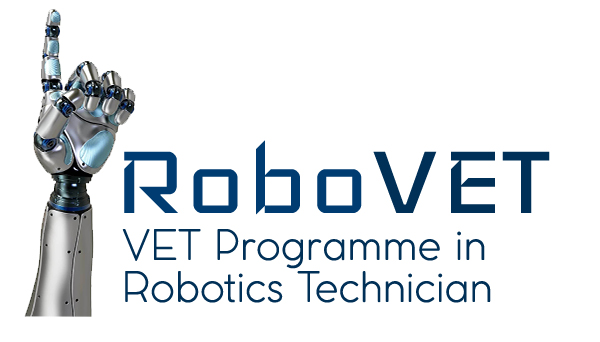RoboVET Project

Profile
| Project Name | RoboVET Project |
| Abbreviation | RoboVET Project |
| Project Description | The results and products the project will achieve are: a needs assessment on Robotics training; a detailed qualification profile including the expected learning outcomes; the matching of skills’ needs to the market needs; a joint curriculum mutually recognized; new training units; sustainable cooperation structures to increase youth employment and VET attractiveness. |
| Impact | The creation of the Robotics Technician VET Course will have impact upon VET students who will have access to a new training offer in an area with high level of employability. VET providers and teachers will deliver a more attractive training offer and improve the capacity to respond to the skills needs of the job market. Enterprises and job market will increase quality, productivity and competitiveness by having access to highly skilled personnel. |
| Coordinator | CEPROF – Centros Escolares de Ensino Profissional, Lda, Portugal |
| Partners | |
| Programme | Erasmus+ KA3 |
| Duration | 24 months |
| Budget | 483.660 EUR |
| Website | https://robovetproject.com/ |
Description
The project will meet 4 objectives:
- increase the employability of young people by matching the market needs to the qualifications;
- contribute to the development of a highly skilled, qualified and mobile workforce;
- support joint developments in VET in Europe and strengthen its quality, relevance and attractiveness by allowing the transferability and mutual recognition of qualifications, making it more appealing for the future workforce;
- Promote the economic development, especially of the SME’s which traditionally have lower capacity to recruit skilled workers, by promoting VET offers in Robotics.
Project Results:
The results and products the project will achieve are: a needs assessment on Robotics training; a detailed qualification profile including the expected learning outcomes; the matching of skills’ needs to the market needs; a joint curriculum mutually recognized; new training units; sustainable cooperation structures to increase youth employment and VET attractiveness.
Target groups:
Direct target groups will be VET students and teachers, VET schools and schools with VET offers, training centres, enterprises and relevant qualification authorities. Indirectly will be involved social partners from different bodies, policy makers and job counselling and /or recruiting entities.